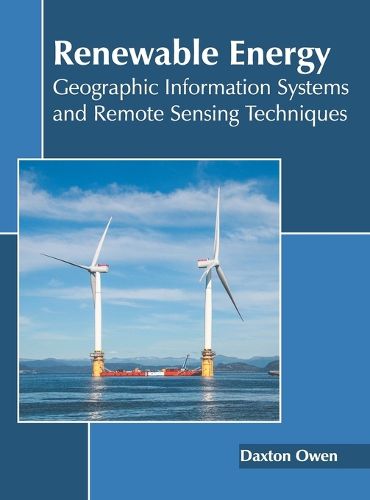Readings Newsletter
Become a Readings Member to make your shopping experience even easier.
Sign in or sign up for free!
You’re not far away from qualifying for FREE standard shipping within Australia
You’ve qualified for FREE standard shipping within Australia
The cart is loading…






Renewable energy is the type of energy that is derived from renewable sources of energy. Hydro energy, geothermal energy, solar energy, biomass energy, wind energy, and tidal energy are some of the most popular renewable energy sources. Remote sensing and geographic information systems (GIS) technologies are widely used in the field of renewable energy. One of the most important steps in developing high-penetration renewable energy systems is evaluating the potential of renewable energy sources. A variety of tools and techniques can be utilized to accomplish this, including on-site remote sensing tools, in situ observations, reanalysis datasets, and satellite image data. The techniques based on remote sensing and GIS are beneficial in finding out optimum locations of renewable energy resources for developing renewable energy infrastructure. This book is a compilation of chapters that discuss the most vital concepts and emerging trends in the use of geographic information systems and remote sensing techniques for renewable energy. It is appropriate for students seeking detailed information in this area of study as well as for experts.
$9.00 standard shipping within Australia
FREE standard shipping within Australia for orders over $100.00
Express & International shipping calculated at checkout
Renewable energy is the type of energy that is derived from renewable sources of energy. Hydro energy, geothermal energy, solar energy, biomass energy, wind energy, and tidal energy are some of the most popular renewable energy sources. Remote sensing and geographic information systems (GIS) technologies are widely used in the field of renewable energy. One of the most important steps in developing high-penetration renewable energy systems is evaluating the potential of renewable energy sources. A variety of tools and techniques can be utilized to accomplish this, including on-site remote sensing tools, in situ observations, reanalysis datasets, and satellite image data. The techniques based on remote sensing and GIS are beneficial in finding out optimum locations of renewable energy resources for developing renewable energy infrastructure. This book is a compilation of chapters that discuss the most vital concepts and emerging trends in the use of geographic information systems and remote sensing techniques for renewable energy. It is appropriate for students seeking detailed information in this area of study as well as for experts.